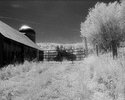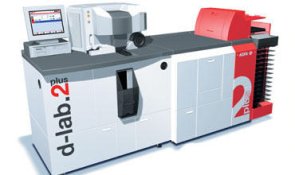Well, what do they use? As Fuji is one of the big players, I suppose their machines are equipped with Fujinon lenses.
......




....a very....very....good point Martin

!
Well this would lead us to a good question

!
"What is a prof. lab today?

?"
If you regard a big costomers lab (the big players of remaining labs today) I can easily imagine
that their machines are equiped with Fuji lenses! (But I can't say - I realy don't know - but it would be quite possible).
What are these labs most printing ? Answer : Small prints for the masses of costumers!
With digitaly mixed workflow ! So we should regard the scanning units first - before we will come
to the lens characteristics of prof. labs

?????
But a prof. lab could also mean : A smaler (individual) lab to real profs. (the most expensive ones today). I can't say for sure : " Fuji enlarger lenses??" it will obviously depend with he machines they have in use?
For example this fine machine here :
(Agfa Dlab2[laser guided digital printer400dpi)
So the equipment of prof. labs is a dead end for our darkroom?

???
Short answer : Y E S !

But never mind in details - what have great prof. labs used in the past (the small ones)? :
Rosenstock, Schneider Kreuznach a.s.o.
I will not come to the maths. concerning the design of lenses!
But have in mind pls. : The numbers of lens elements in total has nothing to say about the characteristics of a lens

! But generally lenses with 6 or 7 elements are more expensive (from
construction/manufacturing) - so these lenses are often at the same time the more expensive
and better lenses.
Better we will see this issue from the opposite side :
Cheap enlarger lenses (the very cheap ones) with less elements are in many cases the ones from
poore characteristics - BUT NOT GENERALLY!
Have in mind if you are able that you are telling your budget what superior lens you need for your
darkroom

!
Or you should think about : Is my budget is telling me how superior my darkroom will be equiped
with an enlarger lens

???
In the second case there is a good middle way : exeptable cost from not too expensive lenses
AND consequently impact to ALL other darkroom parameters (good calibration)!
Because a good calibrated darkroom will cost you much less

!
And for your lens that would mean : No "open" lens pls!
with regards

PS : Be smart and follow this thoughts : If you use an aperature of 5,6/8 with your cheaper
enlarger lens you can (in most cases) higher the characteristics of the cheaper lenses up to a level wich is in the very near of most expensive enlarger lenses at open lens (2.0)in comparison!
This workflow has indeed restrictions because with a poore lens from eBay at about 10bucks
you can't replace a used Rosenstock at about 970,- bucks

!
Even NOT if you operate aperature at f11

Be aware because you should Google the term
"Sweetspot" that can help to save budget and it may help to invest in more papers

!








 !
! !
! ?"
?" ???
???
 !
! !
!
 Be aware because you should Google the term
Be aware because you should Google the term

